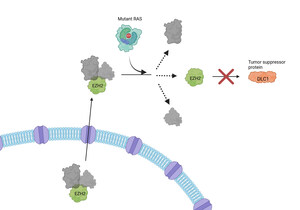By the National Cancer Institute
Editor's Note: The following article is part of the monthly Lifelines education and awareness print series that the National Cancer Institute provides to African American news and information outlets
BETHESDA, Md., Nov. 1, 2013 /PRNewswire-USNewswire/ -- October marks National Breast Cancer Awareness Month. Is there cause for hope? For many reasons, the answer is a resounding "yes." Since 1990, the rate of death from breast cancer has been dropping. Research—much of it funded by the National Cancer Institute (NCI)—has improved our understanding of breast cancer and produced more effective treatments.
(Logo: http://photos.prnewswire.com/prnh/20111018/DC89117LOGO)
Yet, in 2013, more than 27,000 African American women will be diagnosed with breast cancer. The disease is the most common cancer among this group. And although African American women are less likely to be diagnosed with breast cancer than white women, those African American women who do develop the disease are more likely to die from it (more than 6,000 were projected to die in 2013) than women of any other racial or ethnic group in the United States. Part of the reason is that they are more likely to be diagnosed at later stages, when cancer has spread beyond the breast—and when it is more difficult to treat.
The good news is that there is power in information. Get the facts. And, as always, talk with your health care provider about your concerns.
Here's what you need to know about breast cancer:
- Breast cancer is a cancer that forms in tissues of the breast, usually the ducts (tubes that carry milk to the nipple) and lobules (glands that make milk). It occurs in both men and women, although male breast cancer is rare.
- An estimated 232,340 women and 2,240 men will be diagnosed with breast cancer in the United States in 2013. More than 27,000 of those will be African American women. But more than three out of four African American women diagnosed with breast cancer will survive at least 5 years after diagnosis.
- Mammograms are x-ray pictures of the breast that can be used to check for breast cancer in women who have no symptoms of the disease. This type of mammogram is called a screening mammogram. Early detection of breast cancer with screening mammography means that treatment can be started earlier in the course of the disease, possibly before it has spread. Study results show that having regular screening mammograms (every 1 to 2 years) can help reduce the number of deaths from breast cancer among women ages 40 to 74, especially for those over age 50.
- The Affordable Care Act requires that most private health insurance plans provide preventive health services without charging you a copayment or coinsurance. These services include well-woman visits, mammography screenings for women over age 40, and, for women who are at increased risk of developing breast cancer, counseling about genetic tests and counseling and preventive medicines to reduce breast cancer risk. Women with Medicare can now also get mammograms and yearly wellness visits without having to pay a Part B coinsurance or deductible. Information about low-cost or free mammography screening programs is also available through NCI's Cancer Information Service (see below).
- Don't ignore any symptoms. If you notice any changes in how your breasts look or feel, check with your health care provider. Most changes will not be from breast cancer, but they should always be checked.
- Many risk factors for breast cancer have been identified. Risk factors are anything that can increase your chance of developing a disease. Some breast cancer risk factors cannot be changed (such as your age or a history of breast cancer in your family), whereas others can. But having a risk factor doesn't mean that you will get breast cancer. To better understand your risk of breast cancer, read the NCI fact sheet Breast Cancer Risk in American Women.
- Women considering hormone therapy for menopause should know that combination therapy––which includes both estrogen and progestin––increases the risk for breast cancer.
- Research has shown that exercise may help lower breast cancer risk. Try to make physical activity a part of your everyday life. Strenuous exercise for as little as 4 hours a week may lower your risk.
- Being obese after you reach menopause may increase your risk for breast cancer. Doctors know that obesity can increase your risk for a number of diseases—so it makes sense to maintain a healthy weight at any age. To help you get and stay healthy, the Affordable Care Act now requires most private health insurance plans and Medicare to cover obesity screening and counseling at no out-of-pocket cost to you.
- Drinking alcohol can increase your breast cancer risk. If you are concerned, talk with your health care professional about reducing your consumption of alcoholic beverages. Many plans must now cover alcohol misuse screening and counseling without any out-of-pocket cost.
NCI leads the National Cancer Program and the NIH effort to dramatically reduce the burden of cancer and improve the lives of cancer patients and their families, through research into prevention and cancer biology, the development of new interventions, and the training and mentoring of new researchers. For more information about cancer, please visit the NCI web site at www.cancer.gov or call NCI's Cancer Information Service at 1-800-4-CANCER (1-800-422-6237). More articles and videos in the culturally relevant Lifelines series are available at www.cancer.gov/lifelines.
SOURCE National Cancer Institute
WANT YOUR COMPANY'S NEWS FEATURED ON PRNEWSWIRE.COM?
Newsrooms &
Influencers
Digital Media
Outlets
Journalists
Opted In





Share this article